Best Joomla Tutorial for Beginners 2022
Joomla Tutorial for Beginners: Joomla is definitely an open-source Cms (CMS) that forces nearly two million websites on the web. The woking platform offers numerous advanced features, enabling you to easily create a website or perhaps an application.
Considered among the best WordPress alternatives, Joomla supports various content types and custom fields, including gallery, calendar, and checkboxes. This enables you to produce a dynamic website without needing third-party plugins.
This information will give a step-by-step Joomla Tutorial for Beginners regarding how to install Joomla and it is core components. It will likewise take you step-by-step through the information creation process and provide a couple of tips about how to accelerate your website.
Getting to Know Joomla
Joomla may be the third-most-popular CMS after WordPress and Shopify. As a CMS, it offers every tool that users have to manage, update, and publish content. Joomla Tutorial for Beginners Furthermore, the woking platform enables you to definitely build any kind of website, whether it is for any personal or business project.
From site management to core enhancement, Joomla Tutorial for Beginners Joomla likewise helps extend your site’s functionality using a large number of extensions available. They come under these kinds:
Components –
- core extensions that you can modify from the back-end and view on the front end of your site. Some examples are com_content, com_newsfeeds, and com_weblinks.
- Modules – lightweight extensions or widgets that display certain content types, such as recent articles, article categories, or search boxes.
- Plugins – pieces of software that provide additional functions such as adding a music player or social media share buttons to enhance your website’s performance.
- Templates – sets of design and layouts that control the site’s appearance. A template defines how components and Joomla modules are shown on the website.
- Languages – offers translation packs for creating a multi-language site.
- Libraries – collections of function-related code that are used in modules, components, or plugins.
versatility, many well-known brands, and organizations make use of this platform for their websites, including Harvard College, Linux.com, Guggenheim, MTV A holiday in Greece, and also the UNRIC.
Obviously, this platform also offers a steeper learning curve when compared with other CMSs. Joomla Tutorial for Beginners Never fear, because there are many articles, tutorials, videos, forums, and documentation that will help you along.
Installing Joomla
There are two ways to install this platform – automatically and manually.
Using Hostinger’s Auto Installer
Most website hosting providers include auto-installers to let you set up software in the admin panel. On Hostinger’s CPanel, users have access to auto-installers underneath the Website menu. Joomla Tutorial for Beginners If you are using Joomla website hosting, the process would be the same.
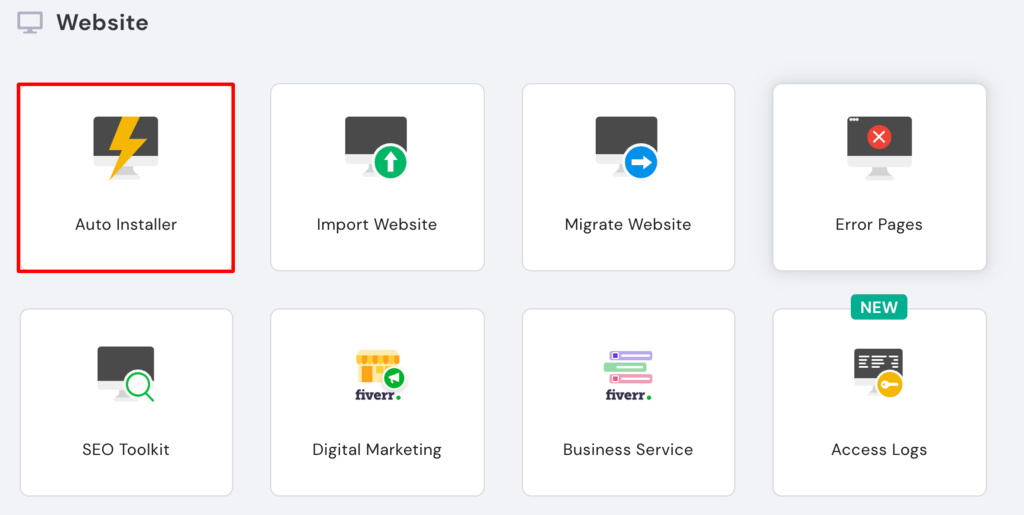
Open the Auto Installer, find Joomla, and click Select.

Specify the configuration details, like your domain, preferred language, administrator email, password, and username. When you’re done, click Install.
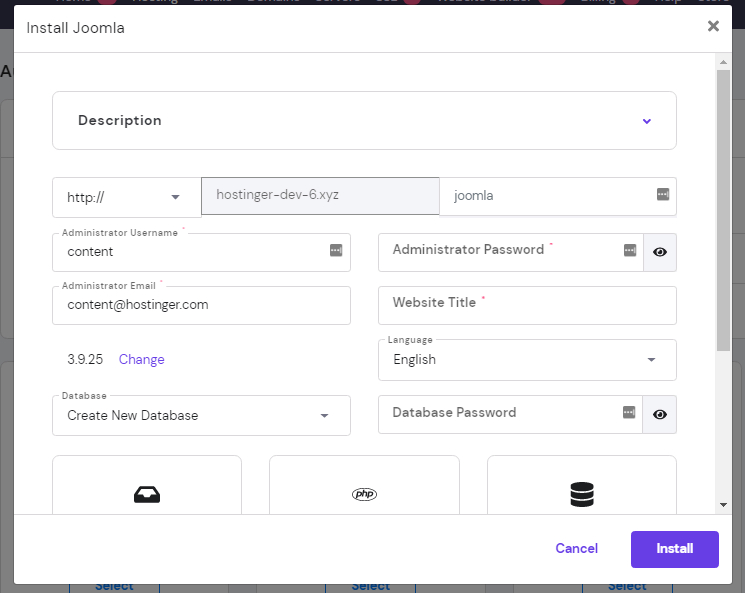
When the installation is finished, you are able to log into the user interface and begin creating your Joomla website.
Pro Tip
Access the Joomla admin panel by adding “/administrator” at the end of your URL (e.g., www.mydomainname.com/administrator)
Installing Joomla Manually
A different way to set up Joomla is thru manual installation. Joomla Tutorial for Beginners This process will need you to produce a database for everyone as storage for that content.
Before you decide to go to a cellular phone, download the most recent form of Joomla from the official website.
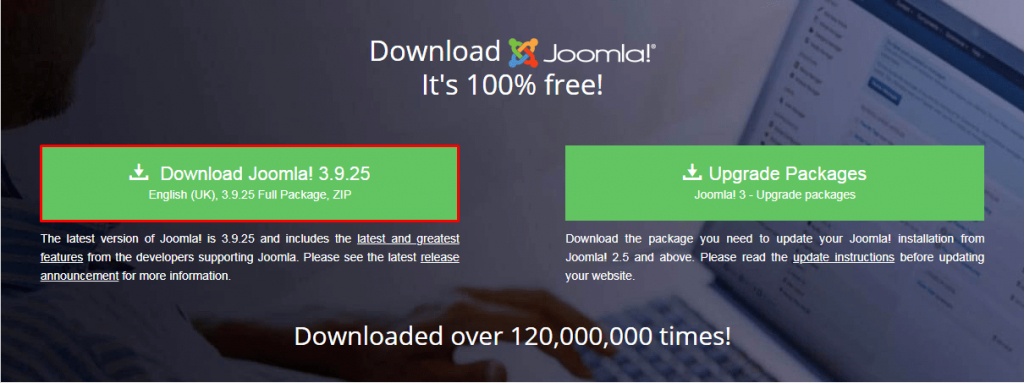
Once the download is complete, access your web hosting control panel to create the database.
- Navigate to your hPanel -> MySQLDatabase -> Databases.
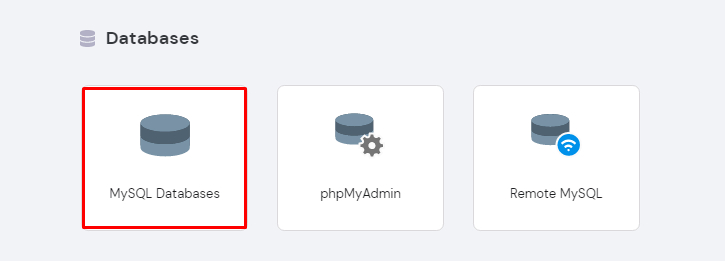
When your database is all set, upload the downloaded .zip file from your computer into your server using Hostinger File Manager

Open your public_html folder and click on the Upload Files button in the upper right corner.

Select the file from your computer and click Upload to begin the process.
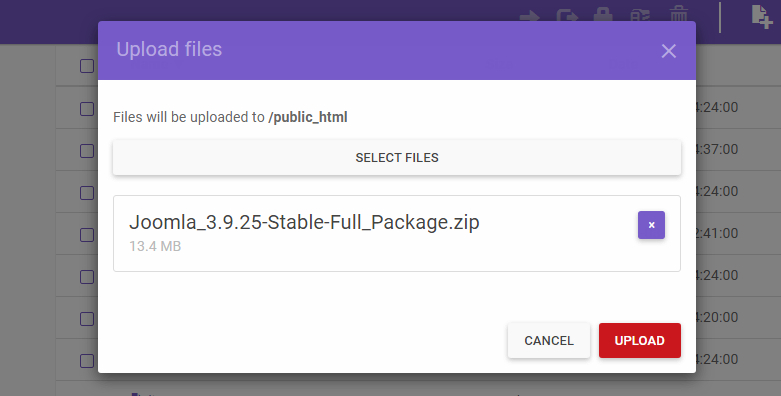
Following the file has effectively been submitted towards the folder, you need to begin to see the file name out there.
Extract the file to retrieve the content by right-clicking and choosing the Extract option.
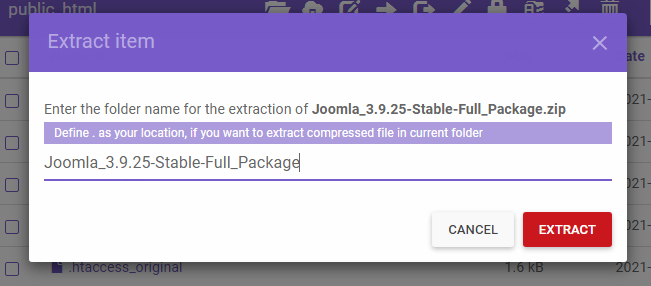
Access your domain name through any browser. This will take you to Joomla’s Main Configuration page.
Pick your preferred language, then fill out the blank fields.
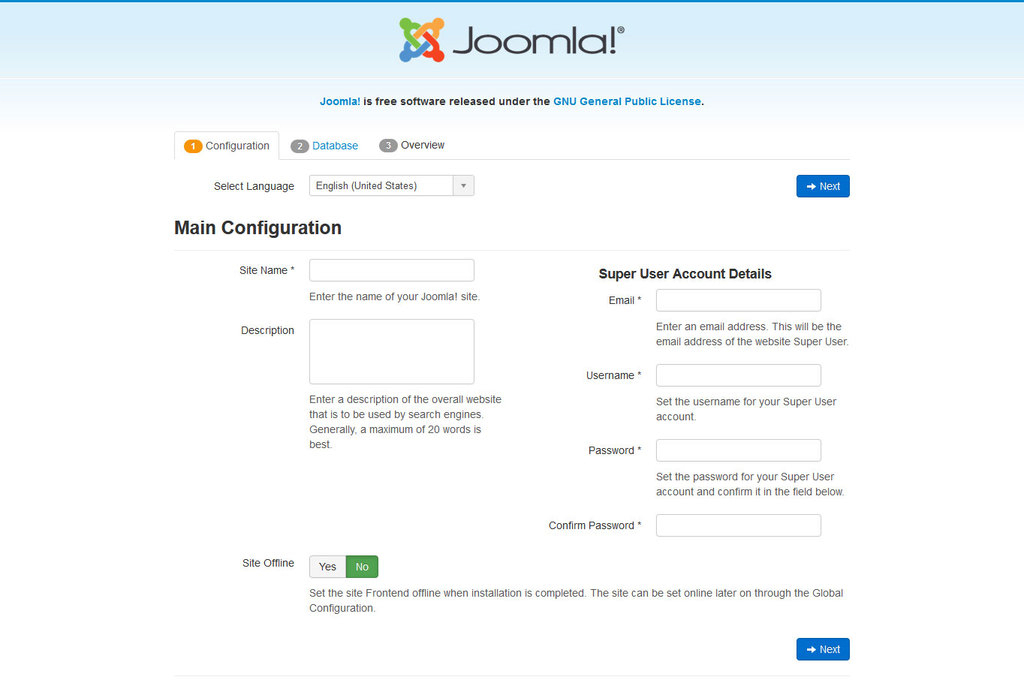
Input your MySQL database credentials from earlier steps.
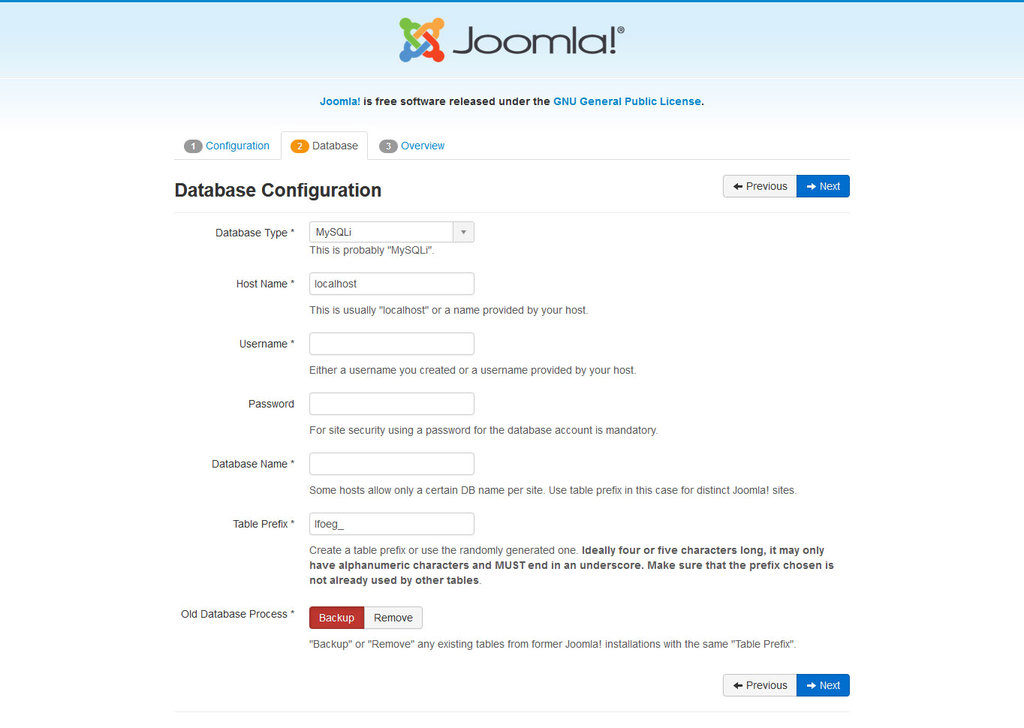
Review the configurations and click Install to finish up.
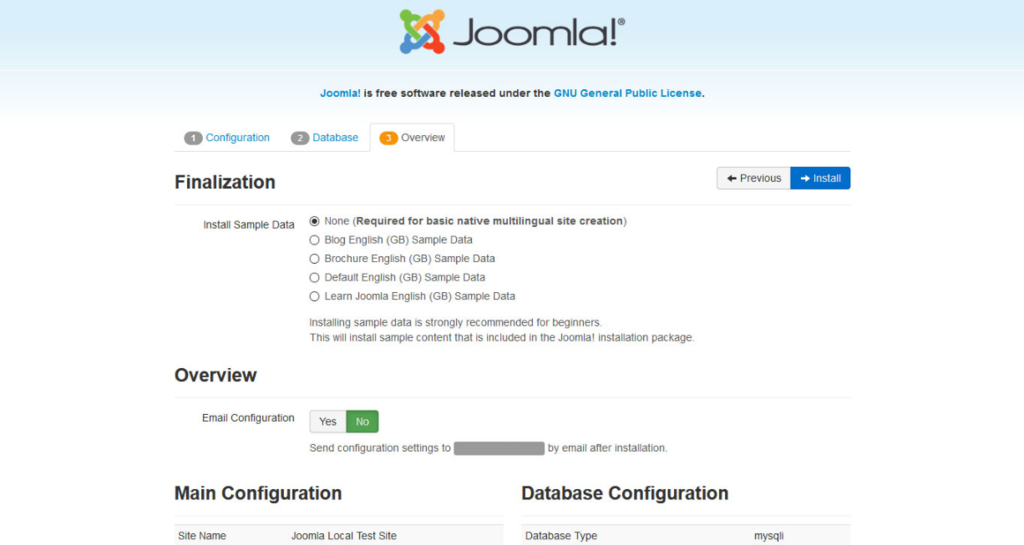
Once the installation process is performed, the page will explain that Joomla continues to be effectively installed.
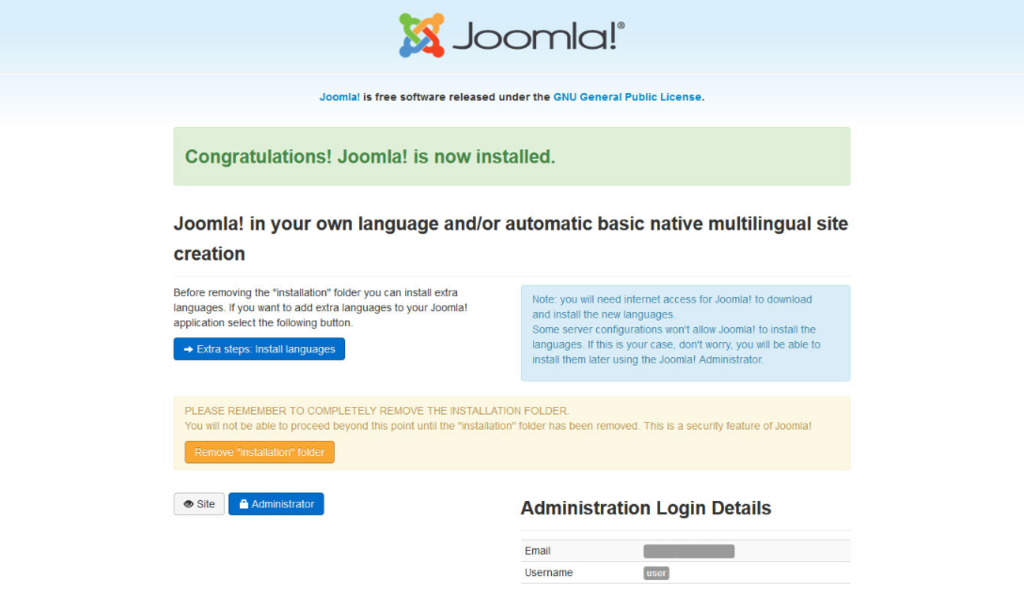
You can now access the Joomla admin dashboard via yourdomain.com/administrator and start working on your project.
Creating a Website With Joomla
The next section can help you get acquainted
Adding Articles
Articles in Joomla refer to blog posts that users display on their websites.
- To create one, access your admin panel and click Content -> Articles -> Add New Article.
with Joomla basics and showcase how you can perform various tasks in the User Interface.
Creating Categories
A category in Joomla enables users to arrange their posts according to relevant topics. If you are planning to produce a multitude of content, creating groups will let people discover info on your website easily.
To be able to assign a category for your content, make certain to produce them ahead of time:
- Click Content -> Categories -> Add New Category on the top-bar menu.
- Fill in the Title, Description, and Alias (optional).
- Select Save or Save & Close to create your new category.
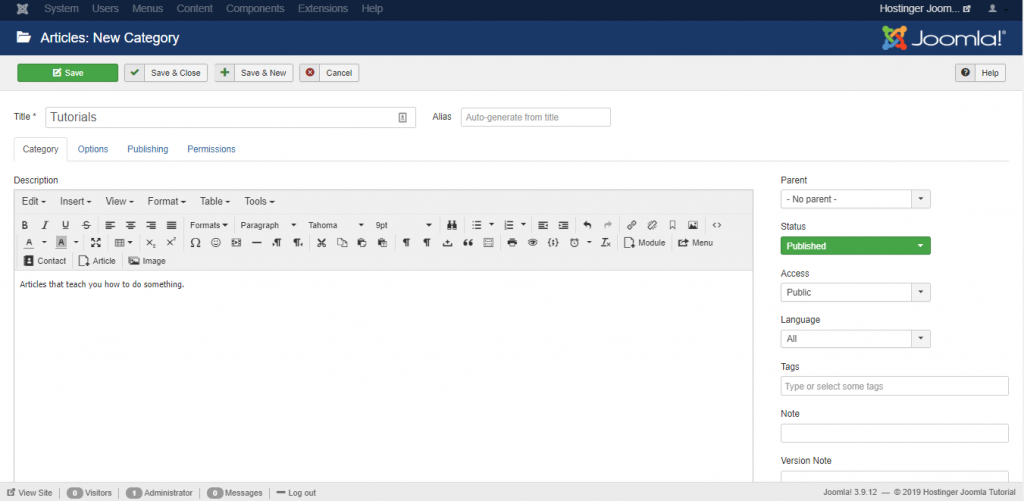
Additionally to assigning a category to some post , Joomla enables you to definitely classify other components, including banners, contacts, and web links.
Adding Featured Articles
To feature articles, navigate to Content -> Articles. There, you will see their email list of printed posts in your website. Simply click the Star icon near the preferred article to really make it featured.
With this function, you can display and highlight specific posts from multiple categories on your home page.
Creating Menus
Joomla menus play a huge role in defining your site’s structure and improving consumer experience. Joomla Tutorial for Beginners The greater straightforward your site’s menu, the simpler it will likely be that people navigate your site.
You are able to display a featured articles page along with other dedicated pages in your website by creating menus.
Head over to the Menus -> Main Menu and choose the Add New Menu Item option.
- Type a title for your menu item, e.g., “Featured Articles” then define the Menu Item Type. For this Joomla tutorial, we’ll choose Articles -> Featured Articles.
- Select which Menu item will be displayed and press the Save or Save & Close button.
Now the new menu should be accessible from your website.
Aside from the Featured Articles menu, Joomla has other types of menu items you can set, including:
- Article Category Blog – shows categories of blog posts in a blog layout.
- Single News Feed – highlights one RSS feed.
- Contact Featured – displays a list of featured contacts.
- Search Results – enables a search form for visitors.
Frequently Asked Questions
Here are some of the most frequently asked questions about Joomla.
Is Joomla easy to use?
Joomla is among the easiest cms to make use of. Joomla auto-installer can be obtained of all web hosting companies, and its not necessary coding understanding to produce a Joomla website.
Joomla extensions assist you to expand the website functionality, for example adding a shopping cart software, a picture gallery, or contact forms. To change the web site design, select from free and premium templates offered at marketplaces like TemplateMonster.
What can you do with Joomla?
You may create all sorts of websites with Joomla. A few of the common options are: online forums, portfolio websites, eCommerce sites, corporate websites, online magazines or newspapers, personal websites.
Creating such websites requires appropriate extensions. You will find over 5,000 extensions offered at Joomla’s extension directory, covering over 30 different groups.
How do I edit an existing Joomla website?
Joomla Tutorial for Beginners, og in to your Joomla admin panel.
To edit published content, go to Content -> Articles to see the list of articles on your website. Click on the one that you wish to edit. After you finish editing, click Save and close.
If you want to switch templates, go to Extensions -> Templates. This will take you to the Template Manager, where it’s possible to edit the template’s options, delete it or set a new template as default.
Is Joomla better than WordPress?
WordPress is perhaps much better than Joomla, because of its simplicity of use along with a vast assortment of styles and plugins. Additionally, it includes a huge user community, which makes it simpler to locate support and help should you encounter issues.
Conclusion
Joomla is definitely an open-source cms that is included with effective built-in features and functionality. When compared with other CMSs, this platform has lots of advantages, including:
- Advanced user management – allows multiple administrators to manage and control the site’s environment and configuration.
- Multilingual support – there is a built-in translation system, enabling you to produce multilingual content.
- Flexible templates – set different templates for your front-end and back-end interfaces.
Joomla includes a steeper learning curve when compared with WordPress. However, because of the ever growing, broadly available documentation, tutorials, and forums, learning Joomla is becoming readily available.
Overall, hopefully this information has helped you realize much more about this platform. Once you’ve setup your Joomla website, remember to do backups, updates, and caching to optimize its performance.